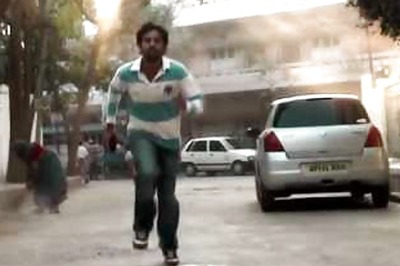
views
There are several misnomers that find their way into the assessment of personalities and political parties. Repeated ad nauseum, these opinions firmly embed themselves into popular narratives and often colour perceptions.
One such popular misconception about Shiv Sena president Uddhav Thackeray is that he is a reluctant politician, who was pitchforked into the hurly-burly of politics against his inclinations.
A nuanced reading of the enigmatic Uddhav as a politician will disprove this notion. He may have a personal and political personality in dissonance with that of his party which is known for its aggression. But those who know the intensely personal Sena president, claim his style is understated.
Uddhav, who is often described as a gentleman, has had to wage many internecine battles to gain control over the party. This included those with his father, late Shiv Sena supremo Bal Thackeray's senior lieutenants, and his younger cousin Raj, who split from the Sena in 2005 to form his own outfit next year.
In 1985, when the Sena came to power in the Brihanmumbai Municipal Corporation (BMC), the 1960-born Uddhav was involved in the campaign. A graduate from the prestigious JJ Institute of Applied Art, Uddhav had launched an advertising agency with his friends. In 1989, when the Shiv Sena started the daily 'Saamana' as its mouthpiece and agitprop implement, Uddhav played a major, behind-the-scenes role.
In 1988, Bal Thackeray's nephew Raj, then just 20, joined politics as the president of the Sena youth wing Bharatiya Vidyarthi Sena (BVS). He was soon portrayed as the Sena chief's successor. In April 1990, Uddhav attended a public function at the Sena's shakha (branch) at Mulund in Mumbai's eastern suburbs, marking his formal entry into politics.
The timing was not a mere coincidence.
The flamboyant Raj was known for being brash and upfront, and a section of the Sena leadership was at odds with his style. This caucus gradually pitched the softer Uddhav as a counter-weight.
In December 1993, Raj, who had toured Maharashtra seeking jobs for the unemployed, had organised a morcha (protest march) on the state legislature during its winter session at the second capital in Nagpur.
A night before the rally, Raj was asked by the powers that be to ensure that Uddhav also made a speech there. This upset Raj, who felt that while he was doing the hard work, “Dadu” (as he called Uddhav), was walking away with part of the credit.
Though insiders said tensions were building up between the two factions, the incident eventually sparked off the fratricidal war, which culminated in Raj forming his own Maharashtra Navnirman Sena (MNS) in 2006. This runs contrary to the popular narrative that the two began falling apart only post-1995.
The July 1996 death of a Mumbai resident, Ramesh Kini, saw Raj and his associates being blamed for it at a time when the Shiv Sena-BJP were ruling the state. The resultant controversy led to Raj, who was eventually exonerated by the Central Bureau of Investigation (CBI), being compelled to take the backseat.
This coincided with the death of Bal Thackeray's wife Meenatai, and elder son Bindumadhav, in quick succession and the Sena chief's estrangement with second son Jaidev. It increased his dependence on Uddhav, who gradually cemented his hold over the party, and his politically astute wife Rashmi.
In 2003, Uddhav was anointed as the Shiv Sena's first working president, in a motion ironically moved by Raj. After his nephew's estrangement, Bal Thackeray would claim that he was not in the know about Raj's decision, though testimonies of incumbent and former Shiv Sena leaders and the MNS chief's public statements suggest something to the contrary.
Gradually, Uddhav controlled the power structures in the monolithic party, edging out competitors like Raj, former chief minister Narayan Rane and his sister-in-law and Jaidev's former wife Smita. Later, Rane would claim Thackeray Sr's 'putraprem' (love for his son) had triumphed everything. His opponents charged Uddhav had the family's political legacy bequeathed to him on a platter. Indeed, in his last public appearance before his death in 2012, Bal Thackeray asked his party faithful to stand by Uddhav and Aaditya.
Compared to his hands-on father, who had a personal touch with his cadre, Uddhav's distant style and inaccessibility, coupled with the rise of a gatekeeper — his powerful personal assistant Milind Narvekar — bred discontent.
The Shiv Sena-BJP's defeat in the 2004 Maharashtra assembly elections, coupled with Uddhav's ascendance, had made it evident to Narayan Rane that he had hit a glass ceiling. In 2005, Rane, a former street fighter and the then leader of opposition, quit the Shiv Sena (the Sena claims he was expelled) in a culmination of his feud with Uddhav, and joined the Congress.
Defections of Sena legislators loyal to Rane, the possibility of losing control over the cash-rich Brihanmumbai Municipal Corporation (BMC) that helps sustain the Shiv Sena's “reward economy”, and finally Raj's decision to quit the party, kept Uddhav on tenterhooks.
Shiv Sena old timers recall how aided by his father, who retained his emotional appeal over the party, Uddhav worked overtime to keep the flock intact. They state that faced with an existential crisis and after being advised by his father, Uddhav tried to overcome his image of being distant and cut-off from the cadre.
The Shiv Sena's shift to Hindutva in the 1980s had affected its focus on the agenda of Marathi identity. In a multicultural city like Mumbai, where Marathi speakers are not in a majority but form the largest minority, this transition came at the cost of the Sena “ignoring” the assertion of other linguistic groups, which caused simmering anger in its core vote base.
Mumbai’s economy had been informalised since the 1980s as the textile mills and engineering industries, which largely employed Marathi blue-collar labour, were run to seed, and their prime lands sold off.
Maharashtrians had to compete with north Indians in the informal sector, where the latter had an economic edge. In 2008, Raj Thackeray's newly minted MNS realised the mobilising potential of this xenophobic agenda and turned its guns on Mumbai’s most visible migrants — the Hindi-speaking north Indians.
The 2009 Lok Sabha and state assembly elections revealed this had struck a chord with the working-class Maharashtrians. Though this blue-collar ‘Marathi manoos’ was part of the Shiv Sena's natural catchment, they voted with their feet for the MNS, giving it a major political opening with 13 seats in the legislature of which six were from Mumbai.
The Shiv Sena also lost its position as the principal opposition to ally Bharatiya Janata Party (BJP).
The death of the Sena patriarch in 2012 led to fears that Raj, who was aiming at the post-Bal Thackeray era, may walk off with his uncle's legacy. However, by then, much of the MNS sheen had worn off due to a series of missteps and the party not being able to fulfill heightened expectations.
More importantly, Uddhav had ensured that the Shiv Sena's machinery was in fine-fettle. Before the 2014 assembly elections, an assertive BJP, which was eager to overcome its status as a minnow in the state, unexpectedly pulled the rug from under the Sena and contested the subsequent assembly elections on its own.
Though the BJP emerged as the single-largest party, the Shiv Sena was able to hold its own with 63 of 288 seats, even as other regional formations wilted and caved in before the Narendra Modi wave.
Caught between a rock and a hard place, Uddhav was forced to join the Devendra Fadnavis-led BJP government. However, the BJP did not spare an opportunity to needle the Shiv Sena. On the other hand, the Sena tried to play-act the role of an opposition party despite being in power, though the tiger's roar was muffled in this delicate trapeze act.
Though the Shiv Sena's demand for a rotational chief minister's post seemed to be the immediate trigger for the Sena- BJP breakup, the reasons go deeper.
A section of the Sena leadership believes the BJP grew at the expense of its allies. The BJP's power projections and repeated attempts to corner the Shiv Sena on issues like the Metro railway car shed at Aarey milk colony, a cause dear to the heart of Uddhav's elder son Aaditya, had caused unease.
Moreover, the BJP was relentlessly poaching leaders from other outfits, the Shiv Sena included, and the prospect of the party being in power for another five years did not bode well.
The Shiv Sena has also undergone a major transition during the state assembly elections as was illustrated by Aaditya becoming the first from his family to contest for public office. This revealed that if they were within striking distance of power, the Thackerays would not hesitate to wear the crown themselves instead of controlling it by proxy. Clearly, as revealed by instances like Narayan Rane's rebellion, the diarchy of power was not working well.
The Shiv Sena’s three-decade-old alliance with the BJP may be over as it gears up to form government with the Congress and Nationalist Congress Party (NCP). However, Sena leaders agree it is easier said than done.
Regardless of whether he heads the government, Uddhav will have a delicate balancing act to perform, managing a diverse coalition. The BJP, which claims this unlikely alliance will collapse under the weight of its own contradictions, will be waiting in the wings for an opportunity to snatch power in India's most urbanised and industrialised state.
Though Uddhav lacks the charisma and oratory of his father and cousin, he is seen as an open-minded individual, who has tried to broad base the Shiv Sena by reaching out to sections like Buddhist Dalits and Hindi-speakers.
The break with the BJP coupled with recent campaigns like those centred around agrarian distress, may expand the Sena's agenda beyond identity politics, which resonates only in the greater Mumbai region. This has hobbled the Sena's growth as pan-Maharashtra regional, sub-national party.
Despite the odds, those who know Uddhav claim he is like the slow-moving but steady tortoise, who has outwitted many fast, but fickle hares.
An old-time friend recalls how they would play badminton with Raj and Uddhav around 1997. Once, Uddhav lost his footing and fell down while playing, and everyone laughed. Though he felt slighted, Uddhav did not show it, but stopped coming to play from the next day. However, in what reveals a lot about the man, he began learning the game and attained commendable mastery over it.
As the saying goes, slow and steady wins the race. A persistent worker that he is claimed to be, Uddhav has an opportunity to test the practical application of this adage.
(The author is a journalist and author of the book ‘The Cousins Thackeray: Uddhav, Raj and the shadow of their Senas’ published by Penguin Ebury Press. This is the first political biography of Uddhav and Raj Thackeray, and has been translated into Marathi as ‘Thackeray Viruddha Thackeray’. Views are personal)


















Comments
0 comment